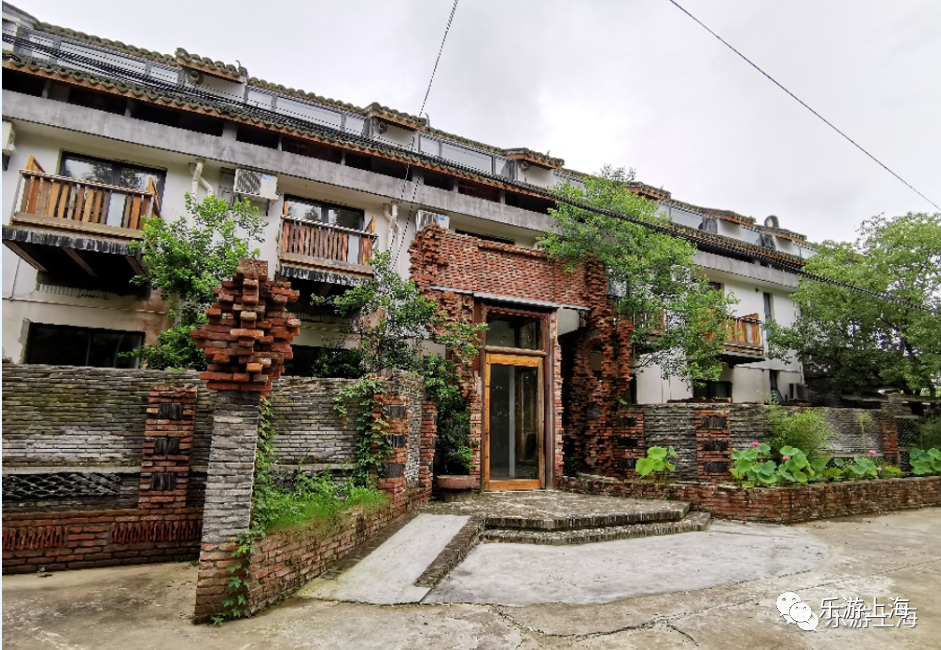The building basically adopts classical composition, but the towers, upper details and decoration on the top of the north and South headwalls are Baroque.
The restoration of the hall on the ground floor and the ambulatory on the first floor mainly lies in the full restoration of its historical style and original pattern, the removal of various structures in the later stage, and the restoration of the original color of the side wall and giant column of the lobby as far as possible.

Transparent safety glass is adopted to make this unique glass awning appear ethereal and lightweight.
The components engraved with brand words in the original structure are preferentially retained.
According to the height lifting of the existing Bund sidewalk, the slope of the awning and the bottom elevation of its outer edge are appropriately increased.
The fourth floor is the top floor.
The restored rain canopy is verified by historical data.
The canopy underwent transformation in the 1980s, and its structural form and size have changed.



Refer to historical style imitation chandeliers, ceiling fans and other objects, and basically realize in-situ installation.

Deeply study the historical photos of the wine cabinet and bar, and make a full-scale sample according to the original proportion# Construction punch point # The longest bar in the Far East is 110 feet long (about 33.528m).
Overall protection, environmental optimization, comprehensive cleaning, protection and renovation of the facade style along the street, and reorganization of the building and its surrounding streamline; Renovate the external environment in front of the east entrance; Reset floodlighting to highlight key parts; A new connector connected with the basement of “Lianyi” phase II is built on the west side of the building to skillfully connect the flow of people and service streamline between the old building and the new building of the hotel.
On the basis of on-site surveying and mapping, after comparison and selection of multiple schemes, it is finally determined that the large canopy is basically restored to the style of 1916; On the premise of ensuring safety, the original lifting points shall be used to remove rust and maintain metal components and re coat the finish paint.
It was announced as a cultural relics protection unit in Shanghai in 1989.
In particular, the sloping roof at the top of the East facade and the tiger window that can enjoy the scenery of the Pujiang River have been revitalized after restoration, creating a high-end catering atmosphere with open space and unique characteristics.
According to the current specifications and safety protection requirements, a transparent safety glass sliding door linkage device is added outside the original iron grid door of the elevator, which not only takes into account the preservation of historical information, but also ensures the safety in use..
It expounds the artistic and cultural value of the building with its unique British style and has always enjoyed a high reputation in history.

The original 40 small rooms on the second and third floors have been upgraded into 20 luxurious full suite rooms, of which 6 rooms can enjoy the view of Huangpu River.


The protection and utilization design follows the principles of authenticity, integrity, identifiability and reversibility, focusing on rational utilization and improving quality.
The purpose of the repair is to optimize the overall environment of the external space, reproduce the appearance and historical features, and carefully protect the existing key protected parts; Carefully restore the important historical characteristic space and decoration, make full use of its unique historical value, and make the architectural heritage move towards the future with elegance and dignity.
The spatial pattern and interior decoration of key protected areas are carefully protected.
After the protection, repair, renovation and renewal projects were completed in 2010, the building became a part of Waldorf Hotel on the Bund of Shanghai.
Several large and small private rooms and meal preparation rooms are set.
The original library with square skylight is changed into a lounge.
The outdoor of the connector on the west side is connected to the small square between the old building and the new building, and the main equipment pipelines lead to each floor of the old building from the basement of the new building through the connector.
There are TASI dry column at the entrance, ionic classical column through the two floors in the middle five of the second and third floors, plus some local treatments, such as lintel decoration on the window, convex decorative patterns on the wall and towers, etc.
Tarrant of Zhihe foreign bank.
The East facade is the main facade along the river on the Bund of the building, with atmosphere and exquisite details.
Under the slope top, it is mainly used as a Chinese restaurant.
It is also one of the earliest Club buildings in Shanghai.

When the building was initially built, a rain canopy was set at the entrance of the East facade.
Bray continued to design.
In 1956, it was changed to Shanghai Seamen’s club.
Retaining the characteristic spatial pattern, making rational use of the original spatial pattern of the building, combined with size, elegance and refinement, it is a very characteristic multi-functional public building.
The foundation of the new building was laid in 1909 and completed in 1910.
In 1971, the Shanghai Federation building was renamed “Dongfeng Hotel” [belonging to Shanghai Xinya (Group) joint venture], which was vacant after 1998.
Carefully restore “the longest bar in the Far East”.


In 1916, a steel framed glass canopy appeared.
The ground floor hall for protection and restoration of characteristic space and characteristic decoration is a gorgeous hall with two floors.
It completely reproduces the historical style, and the appearance of the building is unique and can not be copied.
The main function of the first floor is to provide luxurious banquet reception, protect and repair the space with a wide view to the Bund, such as the original grand banquet hall, the original small banquet hall and billiard room, which are all changed into small restaurants.


The protection and utilization design strives to completely protect and repair the East facade and corner facade, reproduce its historical features, repair the brushed stone wall and exquisite carving, retain its characteristics and continue its value.
Dongfeng Hotel, the former Shanghai Federation, is now the Waldorf Hotel on the Bund.
Located at No.
The daylighting function of large and small arc arch skylights in the hall and reading room was restored, the double-layer glass daylighting skylight was completely protected and repaired, and replaced with safety glass to improve daylighting and its quality.
In 1996, the Shanghai Bund complex was announced as a national key cultural relics protection unit, and the Shanghai Federation became one of the important representative buildings# Architectural repair: completely reproduce the historical style # In 2006, with the transformation of the Bund traffic and the promotion of comprehensive urban service functions, Dongfeng Hotel ushered in the opportunity of protection, repair, utilization and renewal after being vacant for many years.
The middle part is supported by eight pairs of huge double columns, with a one floor multi arch arc ambulatory and an arc arch wooden frame glass skylight on the upper part.
2, Zhongshan East 1st Road, the hotel is a British neoclassical steel beam column and brick concrete structure building.
The building is jointly invested and constructed by British business Jardine Hyatt, jianneimen caustic soda company, HSBC, British business tram company and zhengguanghe soda plant, and British business Juxing construction plant.
After Tarrant died, A.G.
In 1949, the people’s government took over the building and successively served as the East China procurement Station of China department store and the procurement Station of Shanghai department store.
However, most of the original components are retained.


The renovation completely protected and restored the indoor space pattern and characteristic decoration of various key parts, including the entrance hall on the ground floor, the entrance hall with marble stairs, the hall, salon, the reception lobby, the arc staircase and the triangular open elevator.
The two triangular open elevators on the north side of the iron gate elevator lobby have become characteristic facilities of Dongfeng Hotel because of their special shape and excellent workmanship.
The bottom is the most important public space and the essence of the building.

It is located in the southeast of the lobby on the ground floor of Dongfeng Hotel.
The spatial pattern of the lobby is intact as a whole, and its decorative details have changed since its completion.
The new building is designed by B.H.
This repair takes historical pictures as an important research basis and combines the existing data to reposition and restore the characteristic wine cabinet and long bar to be restored, so as to restore the indoor space layout and decorative features and functions of the long bar.
At the same time, according to the historical data, the characteristic furniture furnishings such as the bottom bar and the “first long bar in the Far East” have been restored.
Repair and restore the pebble exterior wall of the North-South facade as it is, and update the damaged exterior windows of the North-South facade.
As a club, it was a famous place for social activities in Shanghai at that time.
In 1909, a new building was rebuilt on the original site because the original building was relatively old.
Today, let’s go into the hotel and explore its “past and present life”# Dongfeng Hotel: European style building with large canopy # Shanghai Federation is an overseas Chinese club in Shanghai and the earliest overseas Chinese club in Shanghai.
Except that the plinth and column of the external wall are stone, they are all cement imitation stone walls.
The ground was broken in 1863 and officially completed in 1864.




